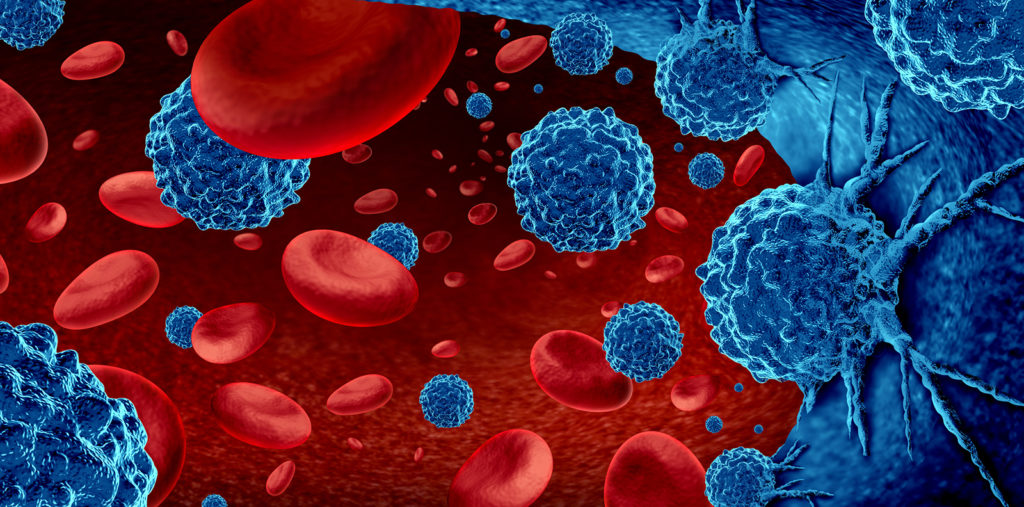 Professor of Medicine, Hematologist/Oncologist, and Honoree MD at the University of Brussels, Dr. Brian G.M. Durie is Chairman Emeritus and Chief Scientific Officer of the IMF. Dr. Durie is also the Chairman of the International Myeloma Working Group (IMWG)—a consortium of more than 250 myeloma experts from around the world—and leads the IMF’s Black Swan Research Initiative® (BSRI).
Professor of Medicine, Hematologist/Oncologist, and Honoree MD at the University of Brussels, Dr. Brian G.M. Durie is Chairman Emeritus and Chief Scientific Officer of the IMF. Dr. Durie is also the Chairman of the International Myeloma Working Group (IMWG)—a consortium of more than 250 myeloma experts from around the world—and leads the IMF’s Black Swan Research Initiative® (BSRI).

Recently Diagnosed or Relapsed? Stop Looking For a Miracle Cure, and Use Evidence-Based Therapies To Enhance Your Treatment and Prolong Your Remission
Multiple Myeloma an incurable disease, but I have spent the last 25 years in remission using a blend of conventional oncology and evidence-based nutrition, supplementation, and lifestyle therapies from peer-reviewed studies that your oncologist probably hasn't told you about.
Click the orange button to the right to learn more about what you can start doing today.
- You are here:
- Home »
- Blog »
- Multiple Myeloma »
- “Functional Cure?” Words Matter
“Functional Cure?” Words Matter

In his essay linked below, Dr. Brian Durie tries to make a case for the term “functional cure” substituting for the word “cure” for multiple myeloma survivors.
First and foremost, I want to go on record as saying that it is to conventional oncology’s credit that first remissions (PFS) and length of life (OS) for newly diagnosed myeloma (NDMM) patients are getting longer and longer.
I was diagnosed with multiple myeloma in early 1994. I have been fortunate enough to have been in complete remission since early 1999.
I understand that, as Dr. Durie states in his essay, that there may be pockets of MM hiding somewhere in my body. This is why I live what I consider an anti-MM lifestyle through:
- anti-angiogenic nutrition
- anti-inflammatory, anti-angiogenic nutritional supplementation
- anti-cancer lifestyle therapies such as exercise, sleep, etc.
The fact is, however, I can relapse at any time. I have never referred to myself as being “cured.?
Further, after induction therapy, consolidation therapy and an ASCT my risk of a treatment-induced secondary cancer is high and increases annually.
Yes, I undergo regular diagnostic testing in an effort to keep an eye on my monoclonal proteins.
If the word “cure” is used in any way other than how it is defined in the dictionary- “ends a medical condition” NDMM patients, looking for hope, will hear only the word “cure.” Which is exactly what happened to the NDMM patient while at UAMS below.
UAMS CURING 30% of Low-Risk Myeloma?!?!
Suggestions to substitute for the word “Functional Cure”
- Indefinite remission
- Disease-free survival
- Progression-free survival
- Relapse-free survival
- Recurrence-free survival
- Event-free survival
- Remission duration
I share Dr. Durie’s desire to cure multiple myeloma. But not at the expense of lying to newly diagnosed myeloma patients and creating false hope.
Have you been diagnosed with multiple myeloma? If so, what stage? Have you undergone any therapy? Do you agree or disagree with me?
If you’d like to learn more about both conventional and non-conventional MM therapies send me an email David.PeopleBeatingCancer@gmail.com
Thanks,
David Emerson
- Myeloma Survivor
- Myeloma Cancer Coach
- Director PeopleBeatingCancer
Cure
“A cure is a substance or procedure that ends a medical condition, such as a medication, a surgical operation, a change in lifestyle or even a philosophical mindset that helps end a person’s sufferings; or the state of being healed, or cured…
Statistical model
In complex diseases, such as cancer, researchers rely on statistical comparisons of disease-free survival (DFS) of patients against matched, healthy control groups. This logically rigorous approach essentially equates indefinite remission with cure.[6] The comparison is usually made through the Kaplan-Meier estimator approach.[7]
Several cure rate models exist, such as the expectation-maximization algorithm and Markov chain Monte Carlo model.[7] It is possible to use cure rate models to compare the efficacy of different treatments.[7] Generally, the survival curves are adjusted for the effects of normal aging on mortality, especially when diseases of older people are being studied.[8]…
From the perspective of the patient, particularly one that has received a new treatment, the statistical model may be frustrating.[6] It may take many years to accumulate sufficient information to determine the point at which the DFS curve flattens (and therefore no more relapses are expected). Some diseases may be discovered to be technically incurable, but also to require treatment so infrequently as to be not materially different from a cure. Other diseases may prove to have multiple plateaus, so that what was once hailed as a “cure” results unexpectedly in very late relapses.
Consequently, patients, parents and psychologists developed the notion of psychological cure, or the moment at which the patient decides that the treatment was sufficiently likely to be a cure as to be called a cure.[6] For example, a patient may declare himself to be “cured”, and to determine to live his life as if the cure were definitely confirmed, immediately after treatment…”
A Deeper Understanding of ‘Cure’ in Multiple Myeloma
For myeloma patients, “cure” is a magical word. It’s like a coveted pot of gold at the end of the rainbow that disappears like a mirage in the desert as you get closer. This is why it’s very important to have a clear understanding of what “cure” really means and how close we are to achieving this much-desired goal of all myeloma patients.
The Basics
In order to achieve a cure, it’s a given that there should be no active myeloma and that the outcome or survival must be similar or equal to the survival of a matched individual where age, gender, and co-morbidities (i.e., other diseases or illnesses) are considered. Additionally, quality of life (QoL) is typically expected to be within the range of very good to excellent.
Key Questions
When it comes to aspiring for a cure, there are some key questions that need to be addressed:
1. Is there zero residual myeloma?
Is myeloma present anywhere in the body with sophisticated testing? Patients found to have no minimal residual disease or are MRD-negative in the bone marrow and have no detectable disease elsewhere after blood testing and imaging (such as whole-body PET/CT) are most likely qualified to aspire for a cure.
2. Is myeloma permanently gone?
If no myeloma is found, is it gone permanently? This is a frequent and major uncertainty in 2024. We rely mostly on predictors of longer complete remissions such as younger age, early disease at the beginning of treatment, lack of poor prognosis, chromosome/genetic factors, and achievement of early deep response. There is a need for AI algorithms to provide better prediction. There is also the ability to predict likely long survival or not.
Reality Check
Studies on long-term survivors (20 years or longer) revealed that the bone marrow microenvironment remains abnormal. The source, which predisposed the early growth of myeloma, is still there. In addition, many patients even with very long survival are found to have tiny residual pockets of myeloma in areas where the myeloma first began—in areas of original, more bulky disease. In post-treatment MGUS, we can predict that patients will likely have these types of remaining pockets of residual disease.
Practical Definition: What is Functional Cure?
For the patient, there is no difference between MRD negative and the presence of a tiny amount of residual disease which is not active or growing. There is no impact on quality of life and comparatively, patients with true MRD negativity survive longer. This is, therefore, the ideal initial goal of therapy. However, not at the expense of major toxicities if the remaining disease is inactive.
Thus, functional cure (including patients with or without a tiny amount of inactive myeloma) is a reasonable goal and is currently being achieved for many patients. It is important to keep in mind that very late relapses can be managed with the very active and newer therapies that are currently available.
Additionally, functional cure can be a multi-step process, and dramatically effective relapse therapies can achieve deep responses and long-lasting benefits.
Functional Cure: By the Numbers
In an IMWG analysis of long survivors published in 2018, a cure fraction of 14.37 percent was noted. (Usmani SZ, et.al. Clinical predictors of long-term survival in newly diagnosed transplant eligible multiple myeloma – an IMWG Research Project. Blood Cancer J. 2018 Nov 23;8(12):123. doi: 10.1038/s41408-018-0155-7. PMID: 30470751; PMCID: PMC6251924.)
This number indicated the fraction of patients still living at 20 years, while taking population comparisons into account. This serves as a baseline for assessments using more recent therapies, including novel and immune therapies.
In separate studies of patients included in these analyses, a mix of MRD negative and MRD positive patients was noted. Thus, these 20-year survivors have achieved functional cure—with or without documented residual disease. Predictors of longer survival included patients at a younger age, earlier disease, and non-IgA myeloma.
More recent results indicate likely significant improvements from this 14.37 percent baseline. The GEM-CESAR Cure Trial achieved MRD negativity of ~40 percent at 6 years.
The corresponding ASCENT Cure Trial achieved an 84 percent MRD negative rate at 3 years.
It is thus reasonable in 2024 and beyond to expect a significant improvement in the potential functional cure fraction at 20 years.
Similar results are now being seen with recent frontline therapies, such as the PERSEUS Trial; and the IsKia Trial in transplant-eligible patients with similar high early MRD negative rates.
From a patient standpoint, it is important to focus on the length of remission (progression-free survival or PFS) and overall survival (OS) potential.
In 2024, an increasing number of patients are achieving first remissions of ~5 years or longer and overall survival of 10 years or longer, indicating early occurrence of functional cure.
I would suggest a shift in focus to long survival, with excellent quality of life safe in the knowledge that many exciting new therapies can further extend survival and perhaps, result in achieving a cure, if not already. A long productive life is what is being sought!
The Bottom Line
When it comes to finding a cure for multiple myeloma, it seems that the “mirage in the desert” is now materializing and becoming a real oasis—with some riders and camels finding respite, as they continue their long journey to a seemingly elusive but nonetheless achievable goal.


